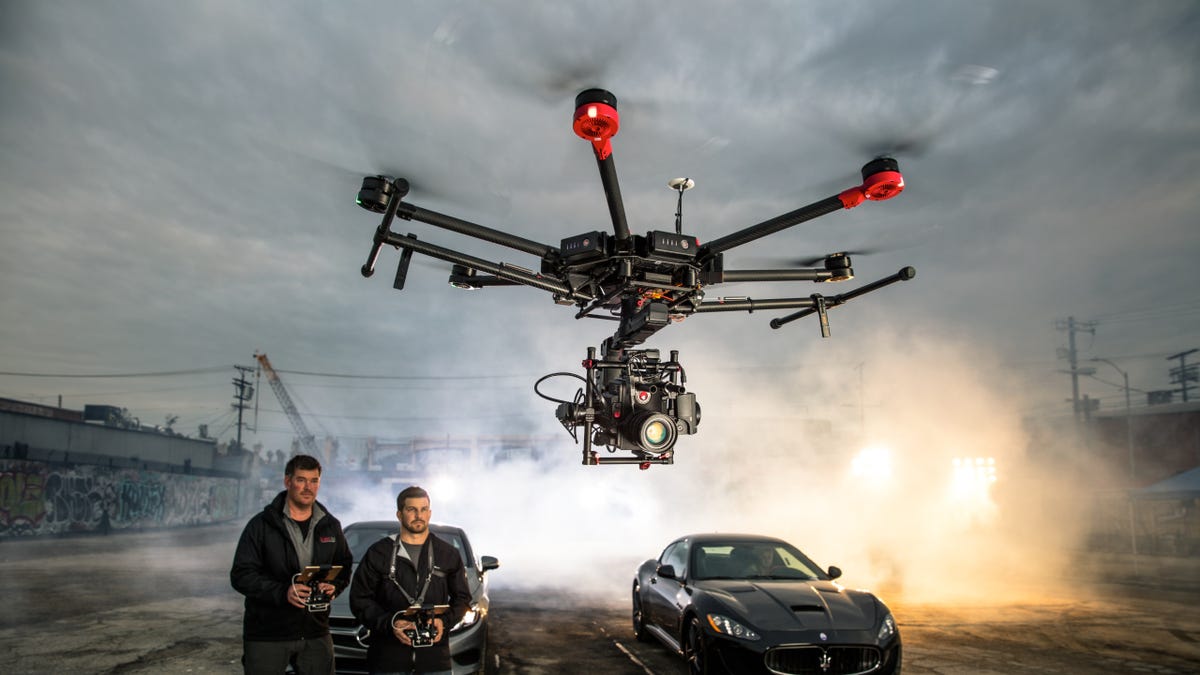DJI Osmo Raw, Matrice M600 drone and Ronin-MX stabilizer mean more smooth video goodness for pros
After introducing a new consumer drone with the Phantom 4, the leader in aerial imaging is now taking care of professionals with new ground and air solutions.

Last September, DJI introduced the Zenmuse X5 and X5R for its Inspire 1 drone, two stabilized camera systems made for professional video. Last year also saw the release of the company's Osmo battery-powered handgrip that turned the original Inspire 1 camera, the Zenmuse X3, into a handheld camera with 3-axis stabilization. And now it's bringing all of that stuff together in the Osmo Raw and Pro.
Billed as "the world's smallest, lossless 4K camera optimized for aerial imaging," the Zenmuse X5R interchangeable lens camera uses a 16-megapixel Micro Four Thirds (MFT) sensor. It can capture 4K-resolution video (4,096x2,160 pixels) at 24 frames per second in MP4, MOV or CinemaDNG raw format at a bitrate of 1.7Gbps, recording to a removable 512GB solid-state drive mounted in the top plate of its integrated gimbal.
The Osmo Raw has an adapter to turn the X5R into a handheld camera with full 3-axis stabilization. Likewise, you'll be able to use an adapter to attach the X5 camera, which will be called the Osmo Pro. The X5 lacks the raw video capture capabilities and 512GB SSD, but can still record 4K video at a 60Mbps bitrate. No pricing or availability has been announced yet.
For Osmo owners with the X3 camera, DJI also announced a $129 attachment (£110, AU$219) for z-axis stabilization needed to reduce vertical shake when walking or jogging. There are also new power solutions including a high-capacity battery for recording up to 96 minutes (78 minutes and 37 minutes with the Osmo Pro and Raw, respectively). A battery-shaped power adapter is available, too, letting you run the Osmo off of one of DJI's drone batteries or their chargers.
Joining the Osmo Raw and Pro are the Matrice M600 drone and Ronin-MX 3-axis stabilizer. Priced separately at $4,599 and $1,599, respectively, or together for $5,999, the pair are made for professional aerial photography, filmmaking and industrial applications.
Key features of the Matrice M600:
- Six-rotor design carries payloads up to 6 kg (13.2 pounds)
- Works with full range of DJI's Zenmuse gimbals
- Dustproof, actively cooled motors
- Retractable landing gear
- Six batteries for up to 36 minutes of flight with Zenmuse X5 camera
- Up to 16 minutes with larger cameras such as Red Epic
- Integrated A3 flight controller with Lightbridge 2
And for the Ronin-MX:
- First DJI-made universal aerial gimbal that communicates with DJI's onboard flight controller
- Can be used in the air and on the ground
- Supports accessories for long-distance focus and aperture control
- Remote start and stop controls and video transmission
- Handheld operation modes include: underslung, upright and briefcase
- Can be attached to video cranes
- Pans 360 degrees and tilts +45 to -135 degrees
- Optional accessory can transmit real-time video from a mounted camera
- Maximum load is around 4.5 kg (10 pounds)
- Works with cameras from Black Magic, Canon, Panasonic, RED, Sony and Nikon

